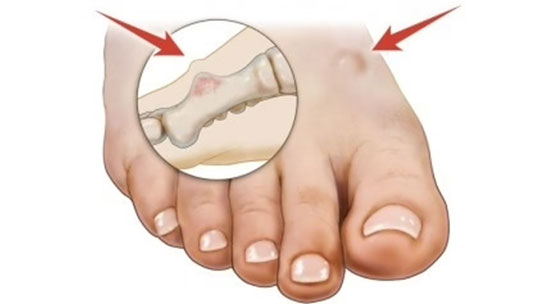Bone Spur
Bone spurs are common bony growths formed on normal bone and often in your joints. They are usually smooth, but can cause pain if they press on other bones, soft tissues, or nerves.
WHAT CAUSES BONE SPURS?
The main cause of a Bone Spur is damage associated with aging and osteoarthritis. The body tries to repair the worn away bones by growing extra bone. Tight ligaments, activities that put stress on the feet, and being overweight can cause the body to try to “self heal” leading to the production of a bone spur.
HOW DO I KNOW IF I HAVE A BONE SPUR?
WHAT ARE THE SYMPTOMS OF A BONE SPUR?
Most Bone Spurs cause no symptoms and can go undetected for years. However, some Bone Spurts can press on other bones or tissue causing them to break down, swell, tear, and become quite painful.
HOW ARE BONE SPURS DIAGNOSED?
Most Bone Spurs are only found with an X-ray.
WHAT CAN I DO FROM HOME FOR A BONE SPUR?
WHAT CAN I DO TO PREVENT BONE SPURS?
Bone Spurs tend to be hereditary and can not be entirely prevented. Maintaining a healthy weight and avoiding high foot stress activities can help reduce the chance of getting a Bone Spur.
WHAT TREATMENTS CAN I DO FROM HOME FOR A BONE SPUR?
- Weight loss
- Ice and rest the affected area
- Stretching exercises
- Wear foam or padded shoe insoles
WHEN SHOULD I SEE A DOCTOR FOR A BONE SPUR?
Make an appintment with your doctor if you have pain, swelling, or difficulty moving one or more joints. Early treatment can help prevent further joint damage.
TREAMENTS YOUR DOCTOR MAY RECOMMEND FOR A BONE SPUR
Non-Surgical:
Bone Spurs do not require treatment unless they are causing pain or damage. Weight loss, physical therapy, and NSAIDs can help reduce their symptoms.
Surgical:
If your physician deems it necessary, Bone Spurs can be removed through surgery.

